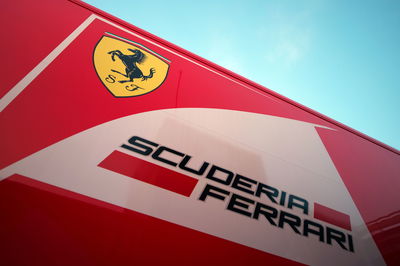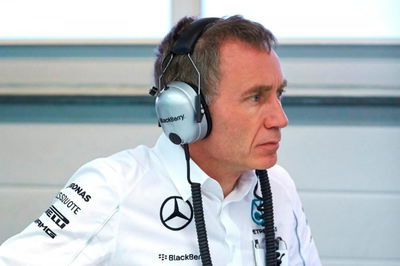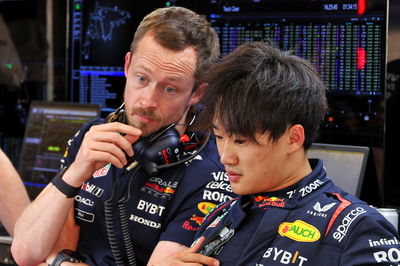Ferrari's Game of Thrones

Ferrari's 86-years-old history has evolved throughout the decades into a true epic saga, in no way second to "A Game of Thrones".
Enzo Ferrari is Aegon "the Conqueror", the first king of House Targaryen and the warlord who founded the city of King's Landing, that is to say Maranello. Luca Cordero di Montezemolo is Rhaegar Targaryen, the heir and last great champion of his dynasty. Sergio Marchionne is Robert Baratheon, who killed Rhaegar-Montezemolo at the climax of the war and claimed his throne. And George R R Martin, the man who recounted this dramatic series of events? He is Leo Turrini, specialist journalist and writer, renowned insider, the man who, according to his influential colleague Mathias Brunner, "knows everything when it comes to Ferrari".
Born in Sassuolo, seven kms from Maranello, in 1960, he lived and told all the three eras of the Scuderia, since he began covering the team's stories for the local press at 16. "My first visit to the Fiorano track was in 1976, during Lauda's first test just 40 days after his accident in Nurburgring", he remembers. And the young Turrini was one of the closest journalists to Enzo Ferrari, who used to give him interviews even during his frequent periods of news blackouts, and whose story he ended up writing as his biographer. That was the very beginning of Ferrari's legendary saga.
"Ferrari is a religion," Turrini commences. "And, as it happens in all religions, Enzo Ferrari was the prophet. He founded the myth of speed and racing, and the idea of cars as luxury objects, artworks. I compare him to Steve Jobs: a unique man, a nonconformist. That's why he never spent a penny on advertising, thinking that the best way to promote his brand was racing. His obsession was that racing cars and road cars had a close link, which most of his contemporaries regarded as freaky. But this very obsession led to the use on everyday cars of the modern windscreen wipers, which Ferrari developed for Le Mans 24 Hours."
Then came Luca di Montezemolo, who began his career in 1973 as Enzo Ferrari's assistant and then manager of the Scuderia, leading it to victory in two Formula One world championships with Niki Lauda. In 1991, he came back to Ferrari, this time appointed as president: his reign would last for 23 year, marked with six more world titles.
"Luca di Montezemolo was Ferrari's heir," Turrini goes on, "the man who rationalised the legend and brought it into the new millennium, though never betraying the founder's legacy.
"Choosing him as president, in 1991, was one of Gianni Agnelli's few good intuitions . Luca was born and raised surrounded by Ferrari's myth, that's why he was the only one who didn't consider the presidency as a stepstone for a career into the Fiat group. His era was a great one,for both sporting and industrial results. I personally think that it was inevitable and logical to change the president after some 23 years. But I didn't like the brutal way the shareholders did it. I agree with Montezemolo when he says he would have expected a bigger 'thank you' from Marchionne."
Which brings us to the present day. Last September, Montezemolo resigned as president following increasing tensions with his would-be successor, Fiat Chrysler CEO, Sergio Marchionne. That was the beginning of the third era in the history of Ferrari: "Marchionne's era began in October and you'll have to wait at least three years to judge him", the Italian journalist reckons. "Regarding Formula One, his first moves seem to be working."
But even the most powerful of kings can achieve nothing without a faithful and capable commander-in-chief, that is to say team principal. Montezemolo had the triumphal Jean Todt, followed by the disappointing Stefano Domenicali and Marco Mattiacci; Marchionne has chosen former Marlboro man Maurizio Arrivabene
"I have known Arrivabene since 1990," Turrini reveals, "and I think he's the right man at the right place: he is very passionate, for racing and for Ferrari, and he has a direct and positive approach towards the need to change Formula One's organization. Having taken care of commercial aspects throughout his career at Philip Morris, he is one of the few to understand what the average fan wants."
Follow the money
So far, we summed up the saga exactly as history books tell it. But what really happened behind the scenes during the last decades at Ferrari. The transition from Todt's winning times to Domenicali's and Mattiacci's long starvation up to Arrivabene's resurgence was all just a matter of brilliance and incompetence? "A team principal has one need: that the team owners give him enough resources to be able win," Turrini explains. "Jean Todt was great, but he had Montezemolo behind him, who since the mid '90s has guaranteed him the new wind tunnel and 100 million dollars a year to hire Michael Schumacher, Ross Brawn, Rory Byrne and all the best technical staff available. When Marchionne became president at Ferrari, he stated a revolution was necessary because to him it was intolerable that the team wasn't winning. Since in F1 you can't win without money, one has to deduce that he will invest enough resources to reach his goal."
According to the most respected insider, therefore, Ferrari obtained their repeated wins during the 2000s and, most recently, ramped up their attack on Mercedes in the easiest way, namely by throwing money in their team. Lots of money, it turned out, as Italian press reported earlier this year that the F1 budget of the Scuderia had been increased over the winter from EUR 270 to 370 million.
"Stefano Domenicali was unlucky, because he led the team during a period when, for a number of reasons, there were less resources available," this is the opinion of the experienced journalist. "That's because, in 2008, Formula One embraced costs cut. In Todt's era, Schumacher used to have four engines per Grand Prix: one on Fridays, two on Saturdays, one on Sundays. And the team principal, like his biggest opponents, had complete authority on limitless spending. The main reason why Ferrari was winning was that they had a test team of a hundred people, between engineers and mechanics. They tested the car around the clock; their whole work method was based on continuous track testing. And they had a big advantage, because they were the only team to own two different private tracks.
There were days when Schumacher was in Fiorano, Barrichello in Mugello and Badoer in Vallelunga. Whatever team wanted to compete with Ferrari, therefore, had to spend loads of money only to rent the circuits. But when FIA limited the number of test days and of engines, they pretty much stripped Ferrari of their advantages. And in the last few years, they have been working to get it back.
Finally, this year Ferrari can use their wind tunnel in Fiorano again, while until last year they had to fly to Cologne and rent Toyota's. Domenicali had a very different situation than Todt's at Ferrari, but despite this he lost three world championships for a total of less than 10 points: in 2008, 2010 and 2012. If only a couple of races had a different story, Domenicali would have been considered one of the best team principals in Ferrari's history. Often, in motorsports as in life, details are those which make all the difference."
Now, with the additional 100 million in the team's coffins, the resources shouldn't be a problem anymore. The question, anyway, remains: will the new Ferrari king Sergio Marchionne and his faithful commander-in-chief Maurizio Arrivabene enjoy a long-standing reign like the one of their most successful predecessors? Or will they be forced to abdicate soon and leave the throne to another, unknown monarch? This part of the saga is still to be written.
by Fabrizio Corgnati











